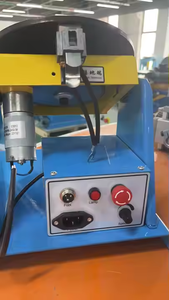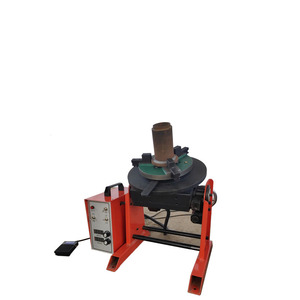
All categories
Featured selections
Trade Assurance
Buyer Central
Help Center
Get the app
Become a supplier

(11692 products available)














































Welding positioners are pivotal in the fabrication and welding industry, serving as advanced tools to hold and position metal workpieces at optimal angles for welding. These devices facilitate precise and efficient welding by allowing operators to rotate and tilt the workpiece, ensuring even exposure to the welding process.
The variety of welding positioners available caters to diverse applications. From benchtop models for smaller projects to heavy-duty positioners designed for large-scale industrial tasks, each type serves a specific purpose. Rotary turntables and 2-axis positioners are commonly used for consistent work on repetitive tasks, while automatic positioners offer advanced control for precision work. For handling substantial weights, heavy-duty headstocks and turning rolls are the go-to equipment, supporting the welding of large components.
A welding positioner is typically constructed from durable materials capable of withstanding the rigors of welding environments. Features may include variable speed controls, tilt range adjustments, and the ability to handle different weight capacities. The construction material of these positioners is crucial, often involving high-grade steel or alloys for enhanced durability and performance under high temperatures and stress.
Utilizing a welding positioner brings numerous advantages to the welding process. It promotes ergonomic working conditions by allowing welders to position the workpiece at the most comfortable angle, reducing fatigue and the potential for errors. Enhanced visibility is another significant benefit, as it allows for a clear view of the welding area, improving the quality of the welds. Moreover, the precision offered by these positioners can contribute to increased productivity and efficiency in welding operations.
Choosing the appropriate welding positioner involves considering several factors, such as the maximum weight of the workpiece, the required tilt range, and the degree of eccentricity that can be accommodated. It is essential to match the specifications of the positioner with the demands of the welding tasks to ensure seamless integration into the workflow. The Alibaba.com platform showcases a comprehensive selection of positioners, enabling buyers to compare different models and find the one that aligns with their specific welding requirements.
In conclusion, a welding positioner is an indispensable tool in the welding industry, enhancing the quality, efficiency, and safety of welding tasks. Alibaba.com offers a broad spectrum of positioners to meet the needs of various welding projects, ensuring that buyers can find the right equipment for their specific applications without the hassle of extensive searches.